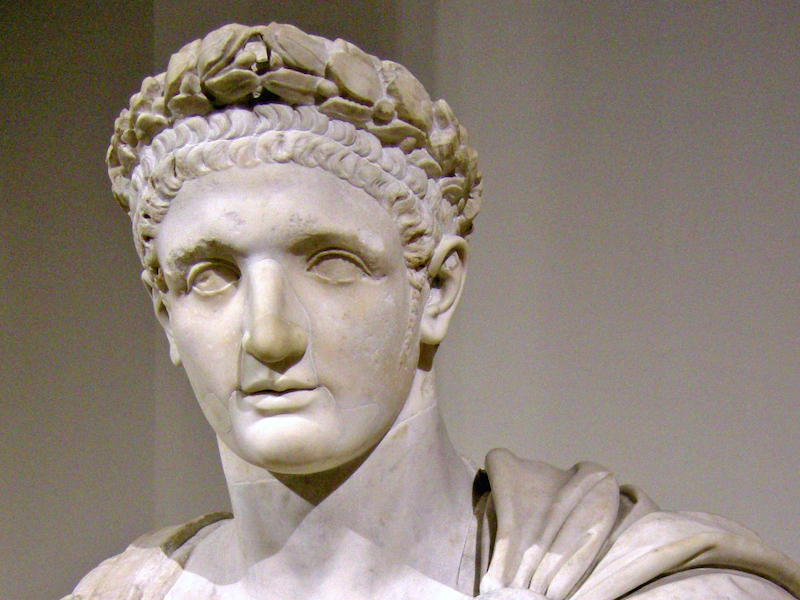Relative Sanity Is Short-Lived as Domitian Returns Rome to Its Roots
Episode #9 of the course The mad world of the Roman emperors by James Wareing
Today, we shall learn about the emperor Domitian. After a period of relative sanity, Domitian returns us to the wilder and more tyrannical aspects of the Roman emperors that we have come to expect.
Domitian became emperor in AD 81 upon the death of his brother, Titus. Titus, on his deathbed, lamented that life was being taken from him undeservedly early because he had made “one mistake.” Rumors swirled about what this mistake could have been, with the most popular suggestions being an affair with Domitian’s wife or that he had not punished his brother’s scheming. Either way, Domitian was at the very least implicated in Titus’s death. His reign marked a return to the archetypal Roman emperor, as he was renowned for his cruelty and vanity.
Extravagance and Domitian the Divine
The start of his reign, however, continued the improvements that the Claudian dynasty had sought to bring to the people of Rome. He restored more of the buildings damaged by fire and neglect and embarked on a quest to improve moral standards by cracking down on sexual licentiousness. Despite this, he also saw the opportunity presented by the fire to build a new palace for himself, as well as a house to hold his banquets.
He, too, enjoyed public spectacles and revelled in providing gladiatorial contests for his people, sometimes at night. This was far from a selfless act, though, and during games, he ordered the judges to wear crowns depicting him among the gods. He even believed himself to be divine, calling himself a “master and a god” of the Roman people. He did not have the appearance of a god, however, an issue that continually vexed him. He became bald with old age and developed a large belly, which according to Suetonius, rendered him “incapable of any physical exertion.” He was particularly insecure about his baldness, about which no jokes were to be made, and even wrote a book entitled, On Caring for Your Hair.
Paranoia and Brutality Returns
Domitian, though he started his reign successfully, succumbed to the frequent destabilizer of emperors, paranoia. This led to him becoming an increasing cruel and tyrannical ruler, with informers again playing an important role in only further fueling the panic of the emperor. Senators and officials were executed, driven to exile or suicide on a regular basis as Domitian tried to tighten his grip on power. Suspects were tortured in increasingly painful ways to extract information from them, such as amputations, often leading to false confessions and further reason for Domitian to believe he was being plotted against.
The reign of terror reached its pinnacle from AD 93-96, with treason laws and Domitian’s cruelty—and not coincidentally, his paranoia—at its highest. Suetonius recounts how he lined the walls of his halls with a particularly shiny stone so he could see at all times who was around him. He executed his cousin for seemingly scant reason, perhaps demonstrating the extent of his power and willingness to crush any conspirators. As money became short after extravagant spending on rebuilding Rome and houses for himself, he also took to taking the property of his victims, an act that may well have saved him from bankruptcy.
Domitian’s Death and the Aftermath
Finally, in AD 96, a plot was successful in killing Domitian. One of his slaves wrapped his arm in bandages a few days before the assassination, as if he had been injured. Then on the day of the emperor’s death, he concealed a dagger beneath it. Upon informing the emperor of a supposed conspiracy, he stabbed him in the groin before others joined in. The death of the emperor delighted the senate and potentially even Domitian’s wife, who was rumored to be involved in the plot.
Domitian’s death meant the end of the Flavian dynasty and led to a period of relative peace and success for Rome. In tomorrow’s lesson, we shall learn about how Rome reached its peak and then collapsed to its ultimate demise.
Learn Something New Every Day
Get smarter with 10-day courses delivered in easy-to-digest emails every morning. Join over 400,000 lifelong learners today!
Recommended book
The Storm before the Storm: The Beginning of the End of the Roman Republic by Mike Duncan
Share with friends

